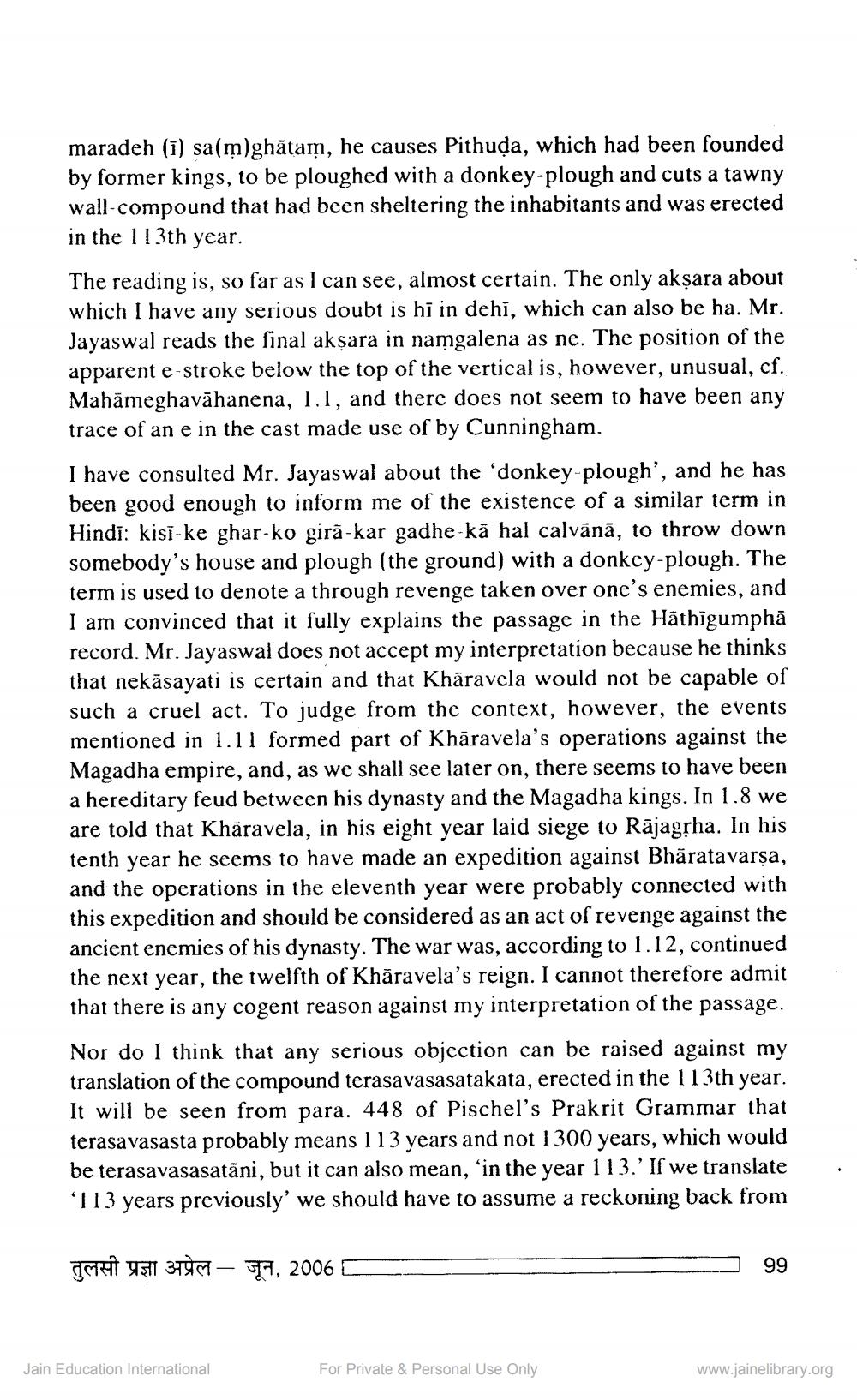________________
maradeh (ī) sa(m)ghātam, he causes Pithuda, which had been founded by former kings, to be ploughed with a donkey-plough and cuts a tawny wall-compound that had been sheltering the inhabitants and was erected in the 113th year. The reading is, so far as I can see, almost certain. The only aksara about which I have any serious doubt is hi in dehi, which can also be ha. Mr. Jayaswal reads the final aksara in namgalena as ne. The position of the apparent e-stroke below the top of the vertical is, however, unusual, cf. Mahāmeghavāhanena, 1.1, and there does not seem to have been any trace of an e in the cast made use of by Cunningham.
I have consulted Mr. Jayaswal about the 'donkey-plough', and he has been good enough to inform me of the existence of a similar term in Hindi: kisi-ke ghar-ko girā-kar gadhe-kā hal calvānā, to throw down somebody's house and plough (the ground) with a donkey-plough. The term is used to denote a through revenge taken over one's enemies, and I am convinced that it fully explains the passage in the Hāthīgumphā record. Mr. Jayaswal does not accept my interpretation because he thinks that nekāsayati is certain and that Khāravela would not be capable of such a cruel act. To judge from the context, however, the events mentioned in 1.11 formed part of Khāravela's operations against the Magadha empire, and, as we shall see later on, there seems to have been a hereditary feud between his dynasty and the Magadha kings. In 1.8 we are told that Khāravela, in his eight year laid siege to Rājagrha. In his tenth year he seems to have made an expedition against Bhāratavarsa, and the operations in the eleventh year were probably connected with this expedition and should be considered as an act of revenge against the ancient enemies of his dynasty. The war was, according to 1.12, continued the next year, the twelfth of Khāravela's reign. I cannot therefore admit that there is any cogent reason against my interpretation of the passage.
Nor do I think that any serious objection can be raised against my translation of the compound terasavasasatakata, erected in the 113th year. It will be seen from para. 448 of Pischel's Prakrit Grammar that terasavasasta probably means 113 years and not 1300 years, which would be terasavasasatāni, but it can also mean, 'in the year 113. If we translate *113 years previously' we should have to assume a reckoning back from
Shen YTT 37067 - 11, 2006 C
Jain Education International
For Private & Personal Use Only
www.jainelibrary.org




